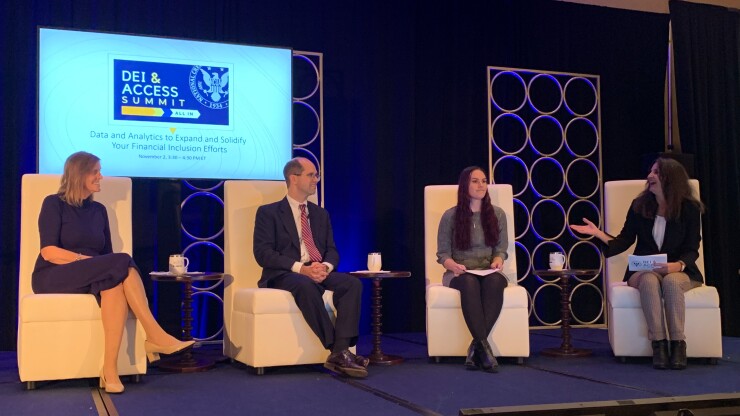Credit unions competing for market share in underserved communities against large banks and challenger financial institutions need to harness deeper data sets to better understand the needs of potential members.
In a panel discussion hosted during the National Credit Union Administration's DEI and ACCESS summit, experts from advisory firms and advocacy trade groups proposed different tools and sources of information that credit unions can use in the search for underrepresented niches both inside and outside their fields of membership.
Luis Dopico, chief economist for the consultancy firm CUCollaborate in Washington, D.C., said institutions such as credit unions may have insufficient data to identify gaps in their fields of membership.
"[Y]ou know their name, their address and deposit or loan balances, but when you want to know something as simple as race, income or housing status … it turns out that it's way more difficult in that it can be intrusive to people [and] expensive for the credit unions to acquire on their own," Dopico said during the discussion last week.
He explained that many institutions are already required by the NCUA to compile
Using AIRES filings and additional demographic data freely available through the U.S. Census Bureau, firms like CUCollaborate can build better algorithms used in determining the makeup of a credit union's membership, Dopico said.

Financial institutions lacking scale, however, face obstacles recruiting the help of outside partners, especially in the wake of recent pushes from regulators like the
Moriah Taylor, a data analyst for CUCollaborate, offered various examples of low-cost software that credit unions on a budget can use with minimal programming and coding experience required.
"If you're looking to visualize your data, there are some great programs out there that don't require you to know how to code," such as Microsoft's Power BI and Salesforce's Tableau, Taylor said. "If you're doing more small-scale analytics, you can even use Microsoft Excel for that."
Taylor stressed that investments in hiring talent knowledgeable in programming languages such as Python or the more statistical-specific R can boost the development of analytics divisions and better prepare credit unions for future needs.
As credit unions continue
"We are financial institutions, and increasingly as a movement, credit unions are serving larger and larger fields of membership. … [W]e need to know that we're serving entire communities," said Cathie Mahon, president and CEO of the Inclusiv Network, an association of credit unions serving economically disenfranchised communities. "We need to know as financial institutions, we are not inadvertently leaving someone out or making decisions that might be harmful to parts of our populations in our communities."






